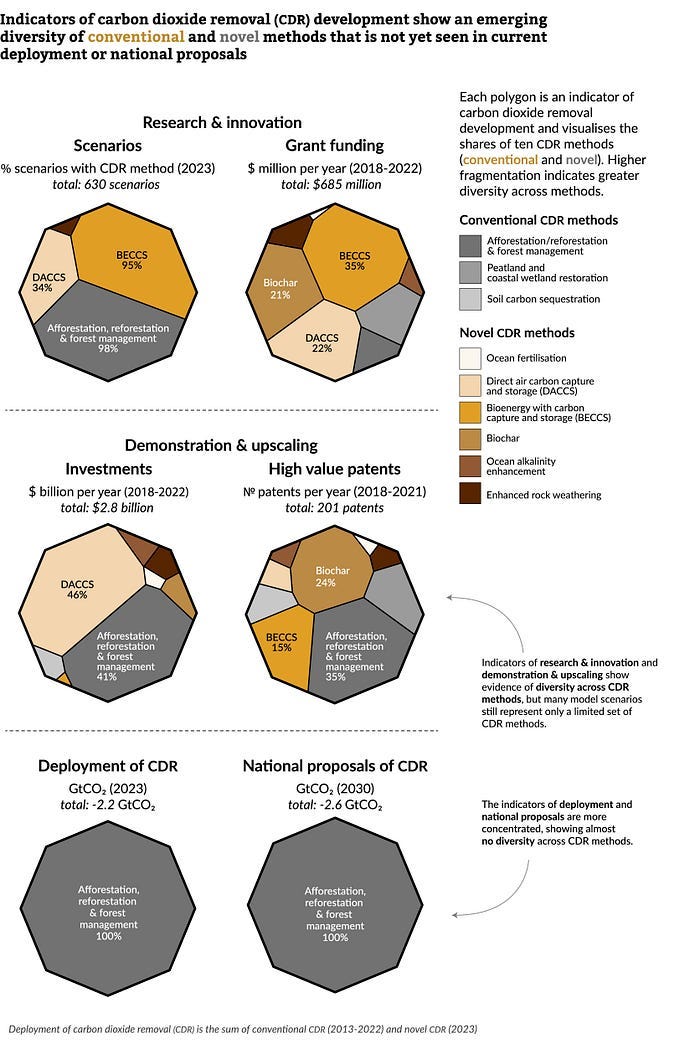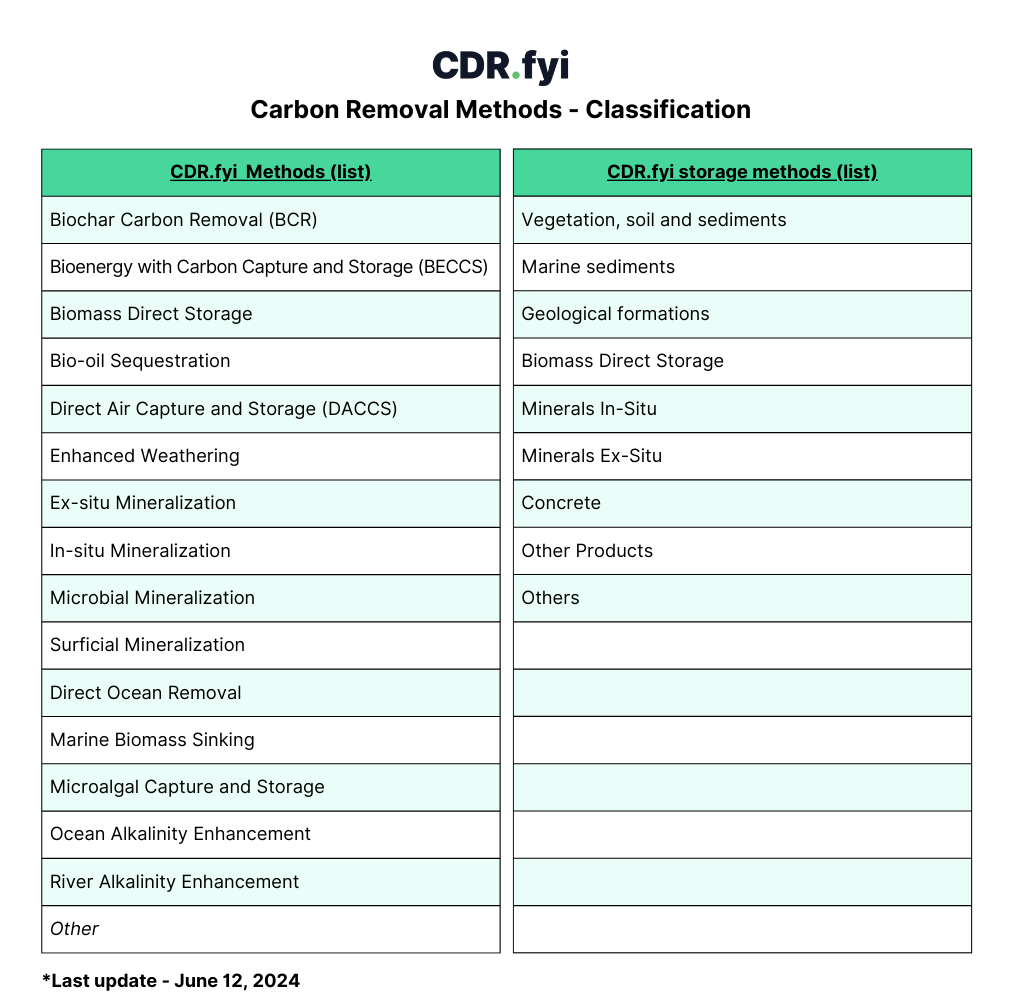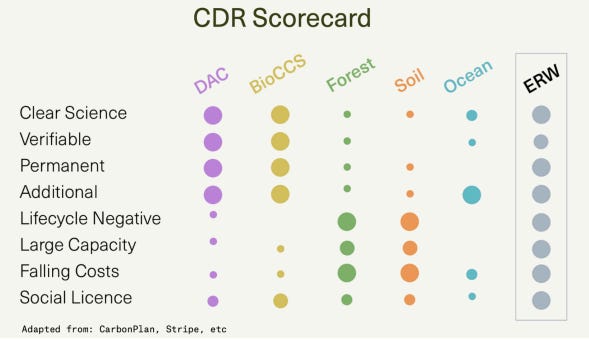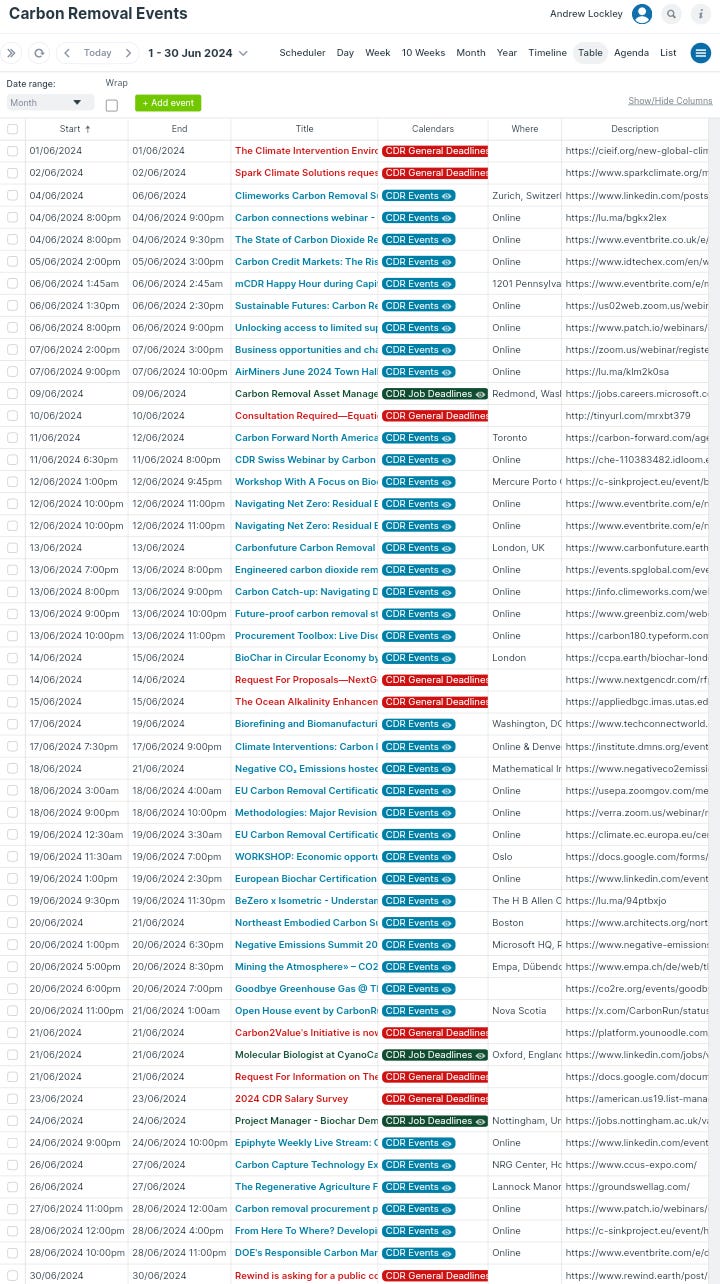CARBON REMOVAL WEEKLY SUMMARY (10 JUNE - 16 JUNE 2024)-WEEK#24
Links to recent scientific papers, web posts, upcoming events, job opportunities, podcasts, and event recordings, etc. on Carbon Dioxide Removal Technology.
💸COMMERCIAL NEWS
Carbonfuture and Swiss Re Enter into Landmark Multi-Year Agreement for Carbon Removal with Exomad Green as Key Supply Partner (Carbonfuture)
Anew Climate Delivers Forest Carbon Removal Credits to Microsoft (Accesswire)
Tomorrow’s Air Expands Impact with Octavia Carbon: Launching the First Direct Air Capture Plant in the Global South (Tomorrow’s Air)
TOWING and Biocare announce multi-project, global agriculture carbon removal partnership (Biocare)
RepAir & EnEarth Sign a Landmark Direct Air Capture & Storage Agreement (RepAir)
Royal Ascot appoints carbon removals firm CUR8 to rein in emissions (BusinessGreen)
Leilac and Heidelberg Materials agree Joint Venture for Leilac-2 (Calix)
Boomitra and Mongolian Government Sign Agreement to Introduce Regenerative Agriculture and Carbon Finance in Mongolia (Newswire)
XTCC Collaborates With Industry Partners On Blue Carbon Initiative (Carbon Herald)
3Degrees Launches Innovative Carbon Removal Suite for Streamlined Market Access (PR Newswire)
World Bank's $200 Million Bond Boosts Amazon Sustainability (Devdiscourse)
Hagar hf. invested in carbon removal with Klimate. Through this collaboration, Klimate has procured high-quality credits on their behalf (LinkedIn)
Occidental Low Carbon Ventures and TAE Technologies Explore Fusion Energy for Direct Air Capture Facilities (Yahoo!finance)
Isometric Releases New Protocol Boosting Reliable Biogenic CCS Initiatives (Carbon Herald)
California Legislature passes 2024-25 budget, allocates $40 mln for carbon removal (Carbon Pulse)
Zero Carbon Systems' subsidiary, Global Thermostat, wins as technology provider for two of the nine Direct Air Capture awards in Phase I of the U.S. Department of Energy's Carbon Dioxide Removal Prize (PR Newswire)
Kita launches carbon credit delivery risk insurance to EU & EEA insureds (Kita)
📝RESEARCH PAPERS
Carbon dioxide removal efficiency of iron and steel slag in seawater via ocean alkalinity enhancement
Moras, C. A., Joannes-Boyau, R., Bach, L. T., Cyronak, T., & Schulz, K. G. Carbon dioxide removal efficiency of iron and steel slag in seawater via ocean alkalinity enhancement. Frontiers in Climate, 6, 1396487.
Synopsis: Ocean alkalinity enhancement using iron and steel slags shows promise for carbon dioxide removal. Lab experiments reveal iron slags produce diminishing alkalinity returns, while steel slags dissolve quickly and linearly generate alkalinity, making them better candidates. Toxic metals were minimal in dissolution products, suggesting safety. Utilizing all annually produced steel slag for OAE could capture 10-22 gigatonnes of CO2 by 2100, highlighting significant CDR potential.
Evaluating negative emission technologies in a circular carbon economy: A holistic evaluation of direct air capture, bioenergy carbon capture and storage and biochar
Shahbaz, M., Alherbawi, M., Okonkwo, E. C., & Al-Ansari, T. (2024). Evaluating Net Zero Emission Technologies in a Circular Carbon Economy: A Holistic Evaluation of Direct Air Capture, Bioenergy Carbon Capture and Storage and Biochar. Journal of Cleaner Production, 142800.
Synopsis: This study evaluates DAC, BECCS, and Biochar production for their capacity to mitigate CO2. BECCS offers the highest net energy gain (18.08 GJ/tonne CO2), while Biochar consumes less water (2.3 m³/tonne CO2) and generates significant sales ($756 million). DAC has high energy (11.95 GJ/tonne CO2) and water demands. The optimal solution, integrating 53% Biochar and 47% BECCS, maximizes energy efficiency, minimizes water use, and balances economic benefits.
Biochar addition affects soil carbon stock by altering keystone fungal species and necromass abundance and oxidase activities in forest and paddy soils
Zhang, L., Yingxin, W. U., Zhang, J., Palansooriya, K. N., Chao, L. I. U., SHABIR, R., ... & Chang, S. X. (2024). Biochar addition affects soil carbon stock by altering keystone fungal species and necromass abundance and oxidase activities in forest and paddy soils. Pedosphere.
Synopsis: Fungi are vital for soil organic carbon (SOC) utilization and storage. This study explores how biochar affects fungal communities, abundance, enzyme secretion, and necromass in forest and paddy soils from southern China. Using a mesocosm experiment, low-temperature biochar (BL, 300°C) increased SOC retention and fungal abundance in forest soil, while high-temperature biochar (BH, 700°C) had opposite effects in paddy soil. Biochar influenced fungal necromass, oxidase activity, and SOC turnover, with BL enhancing fungal efficiency and decreasing enzyme activity, thereby reducing SOC degradation in forest soil. Conversely, BH increased Fusarium and enzyme activities, promoting SOC degradation in paddy soil.
Impact of Spatial Variability in Zooplankton Grazing Rates on Carbon Export Flux
Meyjes, S. A., Petrik, C. M., Rohr, T. W., Cael, B. B., & Mashayek, A. (2024). Impact of spatial variability in zooplankton grazing rates on carbon export flux. Authorea Preprints.
Synopsis: The biological carbon pump regulates oceanic carbon storage, influenced by zooplankton and their prey. This study uses remote sensing to derive zooplankton grazing dynamics, revealing significant spatial variation in the half-saturation constant (k) globally. High k values, indicating slower grazing, correlate with high productivity areas. Spatially varying k values enhance model accuracy for phytoplankton biomass and reduce mean total carbon export by over 17%. This underscores the critical role of grazing dynamics in carbon export and marine carbon sequestration modeling under future climate scenarios.
Glacial troughs as centres of organic carbon accumulation on the Norwegian continental margin
Diesing, M., Paradis, S., Jensen, H., Thorsnes, T., Bjarnadóttir, L. R., & Knies, J. (2024). Glacial troughs as centres of organic carbon accumulation on the Norwegian continental margin. Communications Earth & Environment, 5(1), 1-13.
Synopsis: Continental margin sediments play a crucial but understudied role in the carbon cycle. Using machine learning, this study quantified organic carbon stocks and accumulation rates on the Norwegian continental margin. Surface sediments store 814 Tg and accumulate 6 Tg/yr of organic carbon, with glacial troughs contributing significantly. These sediments accumulate carbon at larger scales than vegetated coastal ecosystems due to their extent. Future research should investigate how management interventions could boost accumulation rates by reducing anthropogenic seafloor disturbances.
Microbially induced calcium carbonate precipitation through CO2 sequestration via an engineered Bacillus subtilis
Gilmour, K. A., Ghimire, P. S., Wright, J., Haystead, J., Dade-Robertson, M., Zhang, M., & James, P. (2024). Microbially induced calcium carbonate precipitation through CO2 sequestration via an engineered Bacillus subtilis. Microbial Cell Factories, 23(1), 168.
Synopsis: Microbially induced calcium carbonate precipitation (MICP) has potential for geoengineering and construction. This study highlights uncharacterized carbonic anhydrase enzymes capable of CO2 sequestration and CaCO3 generation. Bacillus subtilis was engineered to express these enzymes, reducing CO2 from 3800ppm to 820ppm and producing calcite and vaterite minerals. Using this enzyme with Sporosarcina pasteurii enhanced mineral production. This approach could lead to carbon-negative cementitious materials for the construction industry, leveraging engineered microbial systems for CO2 sequestration and CaCO3 biomineralization.
Carbon sequestration in different urban vegetation types in Southern Finland
Thölix, L., Backman, L., Havu, M., Karvinen, E., Soininen, J., Trémeau, J., ... & Kulmala, L. (2024). Carbon sequestration in different urban vegetation types in Southern Finland. EGUsphere, 1-38.
Synopsis: Cities aim for carbon neutrality, focusing on urban vegetation's carbon sinks. This study evaluates three models—JSBACH, LPJ-GUESS, and SUEWS—for estimating carbon sequestration in various urban vegetation types in Helsinki, Finland. The models simulated seasonal and annual variations well but struggled with absolute flux validation due to observational constraints. Irrigation improved carbon sequestration, and tree-covered areas sequestered more carbon annually than lawns. All models showed similar mean net ecosystem exchange annually, with notable year-to-year differences. The research highlights the need to incorporate diverse vegetation and irrigation impacts into urban carbon models for better urban planning and climate mitigation.
Quantifying the negative effects of dissolved organic carbon of maize straw-derived biochar on its carbon sequestration potential in a paddy soil
Han, L., Liu, B., Luo, Y., Chen, L., Ma, C., Xu, C., ... & Xing, B. (2024). Quantifying the negative effects of dissolved organic carbon of maize straw-derived biochar on its carbon sequestration potential in a paddy soil. Soil Biology and Biochemistry, 109500.
Synopsis: Biochar from low-medium temperatures contains dissolved organic carbon (BDOC) affecting soil carbon dynamics. This study used maize straw-derived biochar at 300/450°C, BDOC-extracted biochar residues, and δ13C analysis to measure impacts on paddy soil. BDOC, rich in lipid, protein, and carbohydrate-like species, enhanced soil organic carbon mineralization by 15-20%. Removing BDOC from 300°C biochar changed its priming effect from positive to negative, and for 450°C biochar, the negative priming increased by 31%, while biochar mineralization decreased by 41-65%. BDOC extraction also reduced soil macro-aggregates by 16-25% and increased soil organic carbon's sorption by biochar by 68-122%. This suggests BDOC extraction can improve biochar's carbon sequestration potential.
Sustainable bioenergy contributes to cost-effective climate change mitigation in China
Xu, Y., Smith, P., & Qin, Z. (2024). Sustainable bioenergy contributes to cost-effective climate change mitigation in China. iScience.
Synopsis: Biomass residues from agriculture, forests, and livestock in China offer significant bioenergy potential. This study uses an integrated data-modeling approach to evaluate sustainability, bioenergy potential, GHG reduction, and cost-effectiveness. Only 27% of biomass can be sustainably utilized, yet it can significantly mitigate climate change. Bioenergy can reduce GHGs by 1.0 Gt CO2e annually, or 1.4 Gt CO2e with BECCS, comparable to China's terrestrial carbon sinks. The abatement cost is regionally variable but generally lower than other carbon removal technologies. The study highlights region-specific bioenergy pathways for carbon neutrality and the importance of considering technological and market factors.
Assessing the impact of CO2-equilibrated ocean alkalinity enhancement on microbial metabolic rates in an oligotrophic system
Marín-Samper, L., Arístegui, J., Hernández-Hernández, N., Ortiz, J., Archer, S. D., Ludwig, A., & Riebesell, U. (2023). Assessing the impact of CO2 equilibrated ocean alkalinity enhancement on microbial metabolic rates in an oligotrophic system. EGUsphere, 2023, 1-29.
Synopsis: This mesocosm experiment in Gran Canaria's oligotrophic waters used a total alkalinity gradient (∼2400 to ∼4800 µmol L−1) to study OAE's impact on planktonic communities. Results showed no linear response in net community production (NCP), gross production, community respiration, and metabolic balance (GP:CR) to the entire alkalinity gradient. However, significant responses were noted up to ΔTA 1800 µmol L−1, with NCP peaking at ΔTA 1500 and 1800 µmol L−1. No negative effects on primary production, metabolism, or composition were found, suggesting a potential co-benefit of OAE. Further research is necessary to understand OAE's long-term effects on planktonic communities.
Dynamics of carbon sequestration in vegetation affected by large-scale surface coal mining and subsequent restoration
Xu, Y., Li, J., Zhang, C., Raval, S., Guo, L., & Yang, F. (2024). Dynamics of carbon sequestration in vegetation affected by large-scale surface coal mining and subsequent restoration. Scientific Reports, 14(1), 13479.
Synopsis: Surface coal mining and restoration significantly impact regional carbon sinks. This study presents a novel method to assess vegetation carbon sequestration dynamics during large-scale coal development. Mining reduced carbon by 384.63 Gg CO2, while restoration added 192.51 Gg CO2 by 2022. The deficit in carbon sequestration at mining sites was 1966.7 Gg CO2, emphasizing the ongoing need for comprehensive restoration strategies to mitigate environmental impacts.
The potential of microalgae for carbon capture and sequestration
de Souza, M. F., Meers, E., & Mangini, S. (2024). The potential of microalgae for carbon capture and sequestration. EFB Bioeconomy Journal, 100067.
Synopsis: Microalgae are touted for CO2 sequestration due to efficient photosynthesis. This study assesses their potential by integrating with large and low emitters (gas-based energy plants, dairy farms). It questions if such integrations truly sequester carbon long-term, given biomass CO2 release upon use. Addressing microalgal CO2 footprints is crucial for sustainable development amid investment risks from misleading claims.
Investigating the effect of silicate- and calcium-based ocean alkalinity enhancement on diatom silicification
Ferderer, A., Schulz, K. G., Riebesell, U., Baker, K. G., Chase, Z., & Bach, L. T. (2024). Investigating the effect of silicate and calcium based ocean alkalinity enhancement on diatom silicification. Biogeosciences Discussions, 2024, 1-28.
Synopsis: This study investigates the impact of simulated mineral-based Ocean Alkalinity Enhancement (OAE) on coastal plankton communities. Results show significant effects on diatom silicification with silicate-based treatments, while alkalinity increases had limited genus-specific impacts. Understanding these dynamics is crucial for assessing OAE's broader implications and potential interactive effects in marine ecosystems.
Global agricultural N2O emission reduction strategies deliver climate benefits with minimal impact on stratospheric O3 recovery
Weber, J., Keeble, J., Abraham, N. L., Beerling, D. J., & Martin, M. V. (2024). Global agricultural N2O emission reduction strategies deliver climate benefits with minimal impact on stratospheric O3 recovery. npj Climate and Atmospheric Science, 7(1), 121.
Synopsis: Reducing agricultural N2O emissions by 1.35 TgN2O yr-1 through nitrification inhibitors and crushed basalt could enhance regional stratospheric ozone (O3) levels under climate scenarios, with minimal impact on total O3 column recovery by 2075. This strategy also contributes to beneficial CO2 removal, supporting global climate goals without compromising ozone protection.
Expectations on biochar as a climate solution in Sweden: Carbon dioxide removal with environmental co-benefits
Olsson, A., Fridahl, M., & Grönkvist, S. (2024). Expectations on biochar as a climate solution in Sweden: Carbon dioxide removal with environmental co-benefits. Renewable and Sustainable Energy Transition, 5, 100087.
Synopsis: This study examines Swedish public support for biochar as a carbon dioxide removal method. It highlights divergent expectations between stakeholders and authorities regarding biochar's environmental benefits, impacting its deployment scale despite supportive policies and investment grants.
Environmental and economic spatial analysis system for biochar production – Case studies in the East of England and the East Midlands
Tang, Y., Li, Y., & Cockerill, T. T. (2024). Environmental and economic spatial analysis system for biochar production–Case studies in the East of England and the East Midlands. Biomass and Bioenergy, 184, 107187.
Synopsis: Researchers develop an environmental economic model to assess biochar's feasibility for greenhouse gas removal. This study in the East of England and East Midlands highlights spatial impacts of feedstock supply and factory strategies on costs, benefits, and scalability, crucial for effective policy implementation toward achieving net-zero targets.
Exploring the Synergy of Enhanced Weathering and Rhizobacteria in Sustainable Agriculture
Niron, H., Steinwidder, L., Rijnders, J., Boito, L., & Vicca, S. (2024). Exploring the Synergy of Enhanced Weathering and Rhizobacteria in Sustainable Agriculture (No. EGU24-16303). Copernicus Meetings.
Synopsis: Enhanced Weathering (EW) with basalt is a promising method for CO2 removal in agriculture, enriching soil with essential nutrients. Bacillus subtilis, a Plant Growth-Promoting Rhizobacteria, enhances EW by improving nutrient availability and plant resilience under climate stresses. Our study highlights B. subtilis's role in boosting maize biomass, chlorophyll levels, nitrogen balance, photosynthesis, and stomatal regulation, crucial for efficient carbon sequestration and sustainable crop management in variable environmental conditions.
Economical deployment of quarry minerals for land-based enhanced weathering in Northern California
Breunig, H., Fox, P., Domen, J., Kumar, R., Alves, R. J. E., Zhalnina, K., ... & Nico, P. (2024). Economical deployment of quarry minerals for land-based enhanced weathering in Northern California.
Synopsis: Enhanced weathering (EW) using locally sourced silicate rocks on agricultural soils is studied for CO2 removal. Life-cycle analysis of quarry-mined rocks (dacite, andesite, olivine) shows potential costs and benefits, highlighting olivine's viability under DOE Earthshot targets for CDR. Challenges include optimizing application rates to maximize CO2 removal efficiency and reduce costs, emphasizing the need for efficient deployment strategies.
The role of direct air carbon capture in decarbonising aviation
Gray, N., O'Shea, R., Smyth, B., Lens, P. N., & Murphy, J. D. (2024). The role of direct air carbon capture in decarbonising aviation. Renewable and Sustainable Energy Reviews, 199, 114552.
Synopsis: This study evaluates direct air carbon capture to decarbonize aviation, comparing two strategies: offsetting fossil jet fuel emissions by sequestering CO2 vs. producing synthetic jet fuel from captured CO2 and hydrogen. It finds varying costs and environmental impacts, highlighting challenges and sustainability concerns in achieving net-zero emissions in aviation.
Microalgae-mediated biofixation as an innovative technology for flue gases towards carbon neutrality: A comprehensive review
Scapini, T., Woiciechowski, A. L., Manzoki, M. C., Molina-Aulestia, D. T., Martinez-Burgos, W. J., Fanka, L. S., ... & Soccol, C. R. (2024). Microalgae-mediated biofixation as an innovative technology for flue gases towards carbon neutrality: A comprehensive review. Journal of Environmental Management, 363, 121329.
Synopsis: Researchers explore microalgae as a solution for CO2 biofixation from industrial flue gases, enhancing productivity and efficiency through advanced technologies and reactor configurations. Progress in mixotrophic cultures and pilot-scale implementations signals promising developments for sustainable greenhouse gas mitigation and circular economy applications.
Managing intermittency of renewable power in sustainable production of methanol, coupled with direct air capture
Fulham, G. J., Mendoza-Moreno, P. V., & Marek, E. J. (2024). Managing intermittency of renewable power in sustainable production of methanol, coupled with direct air capture. Energy & Environmental Science.
Synopsis: Researchers explore coupling direct air capture (DAC) with methanol production via power-to-methanol (PtM), using renewable electricity from wind farms. Strategies include battery and reserve storage to manage wind variability, optimizing methanol production. Costs vary with wind location, but efficiency improvements aim for competitive methanol prices against fossil fuels, achieving net-negative global warming potential compared to natural gas-derived methanol.
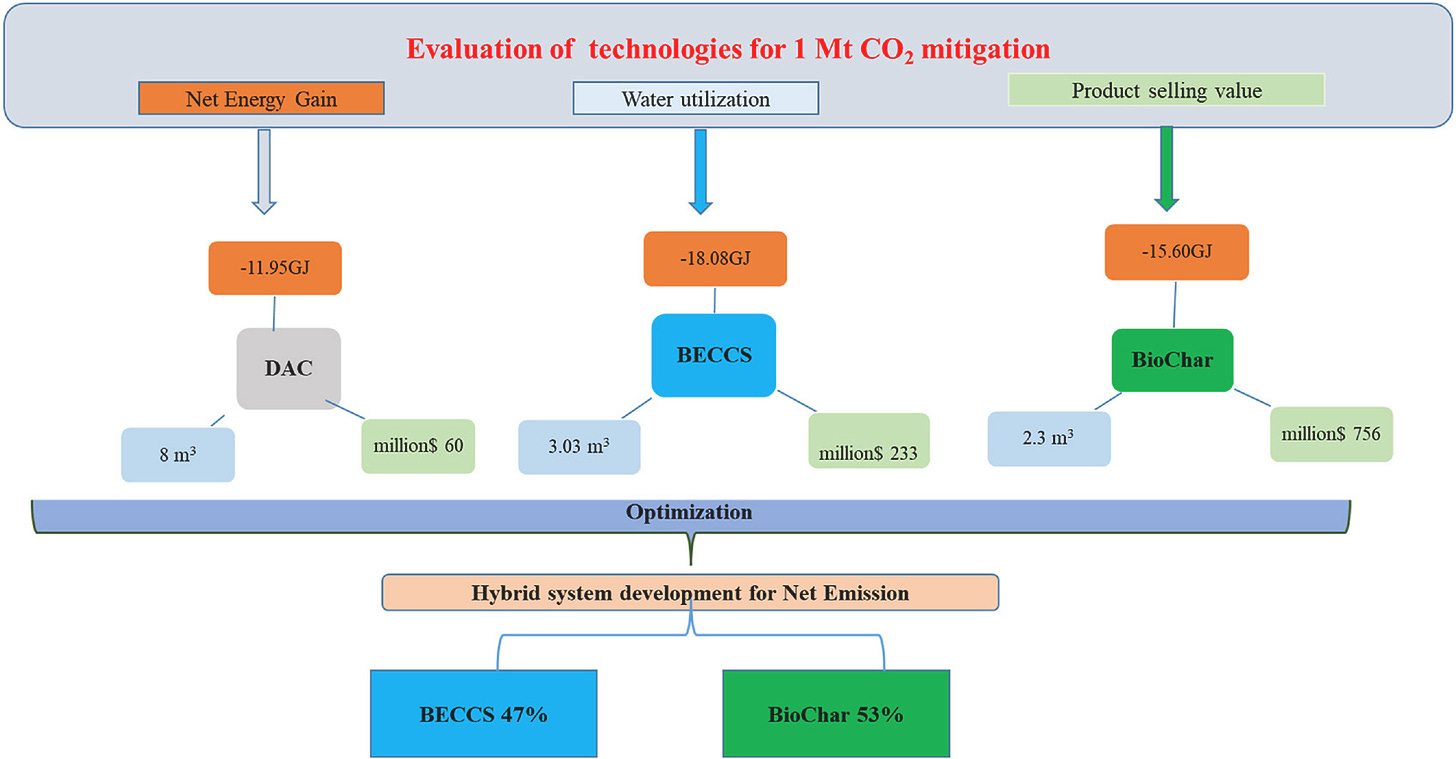
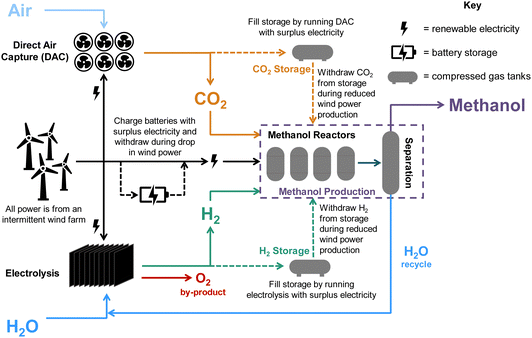
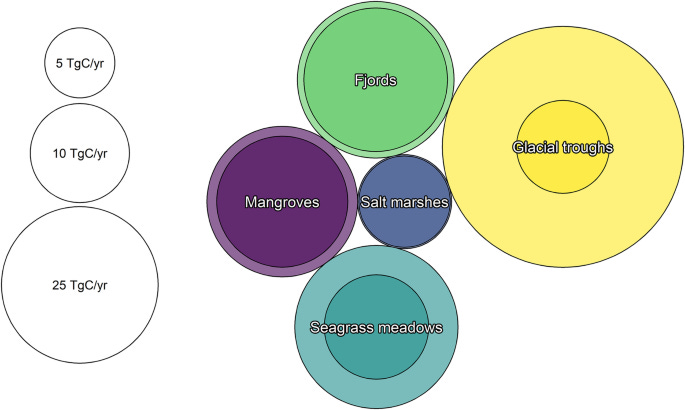
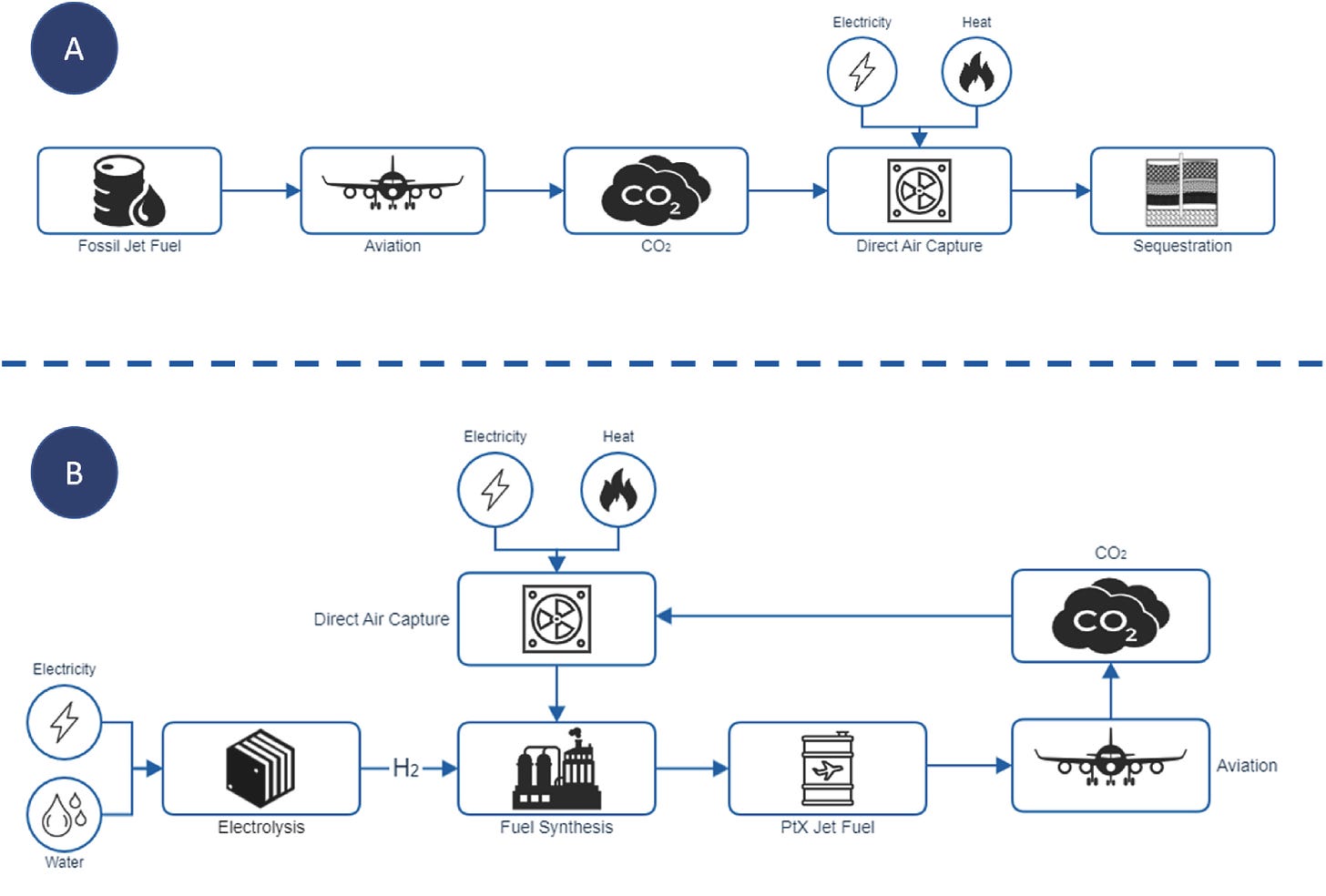
📰WEB POSTS
Seaweed carried to the deep sea stores more carbon than we thought (Phys.Org)
Cautious carbon removal (Nature Climate Change)
Can iron fertilization of the oceans help solve the climate crisis? (Mongabay)
A Billionaire Wanted to Save 1 Trillion Trees by 2030. It’s Not Going Great (Bloomberg)
Carbon Removal Companies: Charting The Course For a Climate-positive Future (UNDO)
Jennifer Wilcox on Building the First U.S. Carbon Removal Office (Heatmap)
KlV Consulation Response from CDR Swiss (Swiss Carbon Removal Platform)
Bridging the Gap to Climate Neutrality: How to Finance a European Net Zero Infrastructure (Novocarbo)
Engaging stakeholders in CDR research (CDRterra)
Deep Dive: About the temperature dependence of CO₂ efflux in our EW experiments (Carbon Drawdown)
Introducing the New Methods Classification at CDR.fyi (CDR.fyi)
Carbon Removal Is Catching On, but It Needs to Go Faster (Scientific American)
Supercharging carbon removal from the EU’s land sector (Illuminem)
Khory Hancock Propels Carbon Project Land Regeneration to New Heights with Climate Revive (Market Insider)
Canada, carbon removal, and the crucial role of philanthropy (Terraset)
Cement Industry Veteran Joins CarbonCure Board of Directors (CarbonCure)
Net-Zero Peanut Wagons & the Perfect Chip: Optimizing Biomass Processing at Charm (Charm Industrial)
As Temperatures Rise, So Does Pressure to Engineer the Ocean (The Walrus)
Brinc Recap: Climeworks’ Carbon Removal Summit (Brinc)
Equatic Welcomes Former Canadian Minister of Environment and Climate Change to its Growing Industrial Advisory Board (Yahoo!finance)
Researchers harvest acid from seawater to feed beneficial algae (Phys.Org)
Inside Microsoft’s Panama tropical forest carbon offtake deal (GreenBiz)
Sink a hole and sell absolution (Heimildin)
DOE Advances Carbon Dioxide Removal Procurement with Phase 1 Awards (Bipartisan Policy)
Running Tide was built for our kids (LinkedIn)
NETL’s Direct Air Capture Center will help industry and researchers test best ways to draw CO2 from the atmosphere (NETL)
Marine CO₂ removal technologies could depend on the appetite of the ocean’s tiniest animals (The Conversation)
New research sheds lights on the huge carbon store in Canada's seabed (Phys.Org)
📃REPORTS
The Procurement Toolbox: Leveraging Federal Purchasing Power to Advance High-Quality Carbon Removal
CDRterra reflection paper ‘Engaging Stakeholders in your Carbon Dioxide Removal Research’ on Zenodo
Measurement, Reporting, and Verification for Novel Carbon Dioxide Removal in US Federal Policy
Report on Enhanced Rock Weathering: Roadblocks and Solutions to Adoption in US Agriculture
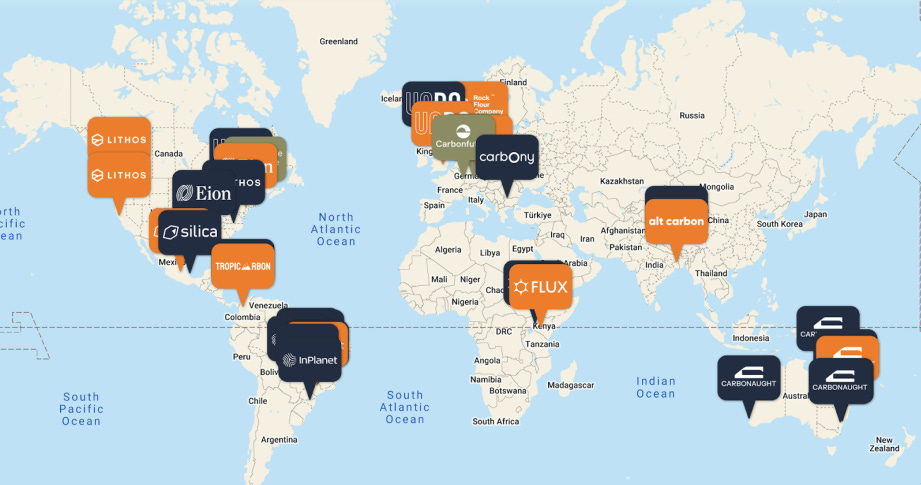
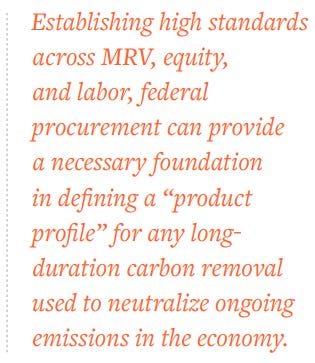
🗓️UPCOMING EVENTS
Negative CO₂ Emissions hosted at the University of Oxford by CO₂RE - The Greenhouse Gas Removal Hub, with financial support from UKRI | 18-21 June 2024
(NEW) BeZero x Isometric - Understanding risk: how to assess carbon credit quality by BeZero Carbon | 19 June 2024 | England
European Biochar Certification C-Sink Standard by European Biochar Industry Consortium (EBI) | 19 June 2024 | Online
WORKSHOP: Economic opportunities from carbon crediting for BECCS projects in Norway | 19 June 2024 | Oslo
(NEW) Open House event by CarbonRun | 20 June 2024 | Nova Scotia
Goodbye Greenhouse Gas @ The Old Fire Station by CO2RE | 20 June 2024
Negative Emissions Summit 2024 | 20 June 2024
(NEW) Northeast Embodied Carbon Summit: Schedule by BSA | 20-21 June 2024 | Boston
(NEW) Epiphyte Weekly Live Stream: Open Source Direct Air Capture by The OpenAir Collective | 24 June 2024 | Online
Mining the Atmosphere» – CO 2 from the atmosphere as a raw material for new materials | 26 June 2024 | Empa, Dübendorf
Carbon Capture Technology Expo North America | 26-27 June 2024
The Regenerative Agriculture Festival by Groundswell | 26 &27 June 2024 | UK
Carbon removal procurement playbook with U.S. Department of Energy (DOE), Bain & Company, and Charm Industrial by Patch | 27 June 2024 | Online
From Here To Where? Developing The CDR Legal Landscape In The EU by CSink | 28 June 2024 | Online
(NEW) DOE's Responsible Carbon Management Initiative and CDR Purchase Pilot Prize by Institute for Responsible Carbon Removal | 28 June 2024 | Online
(NEW) Epiphyte Weekly Live Stream: Open Source Direct Air Capture by The OpenAir Collective | 01 July 2024 | Online
(NEW) Epiphyte Weekly Live Stream: Open Source Direct Air Capture by The OpenAir Collective | 08 July 2024 | Online
Driving Development of Ocean-Based Carbon Removal Technologies with Innovations in MRV, Oceanographic Modelling & New Policy Frameworks to Reduce Global CO2 Emissions | 9-11 July 2024
Advancing Carbon Management: Insights from Land to Sea Using ArcGIS Tools | 16 July 2024 | San Diego / Online
2nd Biochar Malaysia Association International Conference 2024 by International Biochar Initiative | August 13-14, 2024
Goldschmidt 2024 conference, Chicago | 18-23 August 2024
Carbon Unbound Europe | 11-12 September 2024
Carbfix Mineralization Summit 2024 | 12-13 September 2024
Grounding Carbon Farming at Wageningen University & Research by WIMEK in collaboration with SBL, ENP, NGO myclimate, and the farm "La ferme de Hyaumet" | 14-20 September 2024 | France
(NEW) CO2NNECT 2024 by the Great Plains Institute's Carbon Action Alliance | 29 September - 01 October 2024 | Colorado
Bellona Climate Action Conference | 01 October 2024 | Brussels (Belgium)
Volcanoes and past climate: adventures with deep carbon | 12 October 2024 | Online & ExCeL London
IBI Biochar Study Tour: Italy by the Italian Biochar Association and the International Biochar Initiative | 16-18 October 2024 | Florence, Italy
How to apply biochar in sustainability management and accounting | German Biochar Forum | 18 November 2024
We have curated a “Carbon Removal Events Calendar.” Explore and stay informed about upcoming events, conferences, and webinars on Carbon Dioxide Removal technology. Sync specific events / all events to your default calendar to ensure you never miss out on important CDR updates.
GUIDELINES:
Sync selected events to your default calendar in these simple steps:
1) Click on the event you want to sync.
2) Tap the menu icon (three vertical lines) at the top left.
3) Choose 'Share.'
4) Pick your default calendar.
5) Save the event.
Sync the entire Teamup Calendar to your default calendar with these simple steps:
1) Tap the menu icon (three vertical lines) at the top right.
2) Choose 'Preferences.'
3) Click 'iCalendar Feeds.'
4) Copy the URL shown for 'CDR Events / CDR General Guidelines / CDR Job Deadlines.'’
5) Paste the URL into your default calendar settings.
6) Click 'Subscribe' or 'Add Calendar.'
For more detailed instructions, visit: https://calendar.teamup.com/kb/subscribe-to-teamup-icalendar-feeds/
You can directly sync all Carbon Removal events to your default calendars by pressing the link below:
💼JOB OPPORTUNITIES
Innovation Platform Manager – The Greenhouse Gas Removal (GGR) Hub (CO2RE) | Deadline to apply: 04 July 2024
"Apply to play a central role in establishing a new Greenhouse Gas Removal (GGR) business accelerator project based in the Grantham Institute at Imperial College, London. As Innovation Platform Manager, you will craft an environment to help grow new UK GGR businesses, supporting emerging, viable companies that, with your help, will go on to become commercially successful GGR enterprises vital to achieving net-zero. You will work with the climate innovation team at Undaunted and the national research hub on GGR (CO2RE)."
Global Ocean and Land Alkalinization (GOAL-A) Earth Shot Postdoctoral Researcher at Yale University | United States
"We are looking to hire a postdoctoral researcher to work on “Global Ocean And Land Alkalinization” (GOAL-A), a new Department of Energy (DOE) Earth Shot project that aims to create a fully connected global inorganic carbon model. The project will center on improving and integrating biogeochemical models in several “domains” including soils, streams and rivers, the near coast, and the open ocean; conducting both within domain modeling and global earth system modeling. While the scope is global, early analyses will validate this modeling framework using data from the Mississippi watershed and Gulf of Mexico. This project will improve our understanding of how carbon dioxide removal practices like enhanced rock weathering and ocean alkalinity enhancement will affect atmospheric carbon dioxide concentrations, ecosystems, flow path chemistry, ocean pH, and domain-specific alkalinization.
This new project is a collaboration between Yale, Georgia Tech, Princeton, and Texas A&M. We are currently seeking to hire a postdoctoral researcher at Yale University with modeling expertise and interests in carbon cycling, biogeochemistry, soils, hydrology, atmospheric or coupled climate models, reaction transport modeling, river network modeling, regional coastal ocean biogeochemical modeling and global ocean circulation/biogeochemical models. We are particularly interested in those with backgrounds in SWAT modeling, solid phase mass balance for the purpose of MRV, or with interests in contributing to the soils or rivers domains. A solid understanding of basic hydrology and water quality is required. Experience with various hydrology, hydraulic, sediment transport, and water quality models, especially public domain models, is a plus. This includes the simulation of carbon, nitrogen, and phosphorus cycling in the water column and sediments of rivers, lakes, and reservoirs."
Expression of Interest - Leaders in Carbon at Brightsmith | Europe
"Brightsmith are working with select start-up and scaling CDR and CCS organisations who are entering into their next stages off growth. They are looking to make key hires of highly passionate individuals to build up their dedicated teams."
Carbon Modeler at NextBillionX | Houston, TX, USA
Key activities associated with this post:
•Apply models to quantify baseline and project scenario CO2 and CO2e emissions across wide ranging Carbon Removal pathways.
•Use data analytics and algorithms as required by carbon methodologies to develop and validate empirical models and identify any uncertainties or leakages in carbon estimations.
•Collaborate with the core project team in designing projects to acquire accurate data for projects covering e.g. climate, water, soils, energy use, full life cycle of agri crops in a broad range of products and production systems as well as geographic origins.
Senior Carbon Manager at Reforest'Action | Rueil-Malmaison, Hauts-de-Seine, France
"Reforest’Action is linking its activities to the Voluntary Carbon Market (VCM). It intends to use carbon finance as a tool to leverage development of forest-related projects with outstanding value for communities, soil, biodiversity, and climate. The VCM is a market-based tool designed to channel financial flows towards mitigation solutions including enhancement of natural carbon pools. It allows individuals and organizations to finance Nature Based Solution projects with demonstrated carbon removals. The VCM is expected to grow 15-fold by 2030 and demand for forest-based projects is already driving the development of our reforestation and afforestation activities."
Director, Business Development at Rubicon Carbon | United States
"Rubicon Carbon is a carbon credit management firm that helps the world's largest enterprises achieve their sustainability goals. Backed by TPG's $7.3bn Rise Climate Fund, Rubicon Carbon is led by top executives from across finance, technology, and climate science. Rubicon Carbon delivers innovative carbon credit solutions to global businesses while developing decarbonization projects at scale, all backed by rigorous in-house scientific diligence."
Head of Carbon Asset Development at IAC | London, England, United Kingdom
"IAC is a NatureTech company who are on a mission to restore a million hectares of rainforest, sequestering CO2 and reviving indigenous biodiversity. They provide top-tier carbon and biodiversity credits for major global investors."
Hydrological Modeling Development Intern at Everest Carbon | India
"Everest Carbon is commercializing breakthrough proprietary measurement technology to validate carbon dioxide removal (CDR) through enhanced weathering (EW)."
Carbon Removal Manager at Carbonx Climate | Paris, France
"Carbonx stands for Carbon raised to the power of x, referencing the exponential growth needed in carbon removal to reach the IPCC targets. Carbonx's vision is to accelerate the world's transition to net zero. To accelerate the transition, our mission is to help remove 1 GigaTonne of carbon by 2050 directly."
Carbon Originator Senior Manager at cambium.earth | Madrid, Madrid, Spain
"The ambition of Cambium Earth is to make a significant contribution (over 2%) of the planet’s annual carbon removal goals through a nature-positive and economically viable model. The single and most efficient tool we currently have for capturing CO2 from the atmosphere are nature-based solutions. Planting trees and managing carbon sounds like an easy task but doing it cost-effectively and at scale requires overcoming huge challenges such as access to land, regulatory constraints, high-capital needs, trustworthy product design, effective asset management, global operations, and a long-term commitment."
Carbon Removals Scientist at CUR8 | London, England, United Kingdom
"CUR8 is on a mission to remove 1 billion tonnes of carbon a year. They combine financial and scientific expertise to build high-quality and diverse carbon removal portfolios that enable companies to invest in carbon impact with confidence and ultimately reach net zero."
Carbon Accounting Manager at Novocarbo | Hamburg, Germany
"Novocarbo's goal is to store 100 million tons of CO2 from the atmosphere annually, making a significant contribution to achieving climate goals."
Senior Finance Executive at Mati Carbon | New Delhi, India
"Mati Carbon PBC is at the forefront of climate-tech innovation, leveraging Enhanced Rock Weathering (ERW) to remove carbon from the atmosphere while boosting the livelihoods of smallholder farmers in the Global South. We're on a mission to scale up our impact and need a talented Finance Executive to help us achieve our goals."
Technical Sales Manager (Carbon Dioxide Removal) at Brightsmith | London, England, United Kingdom
"Job description: As the Technical Sales Manager, you will own the development of strategic commercial partnerships with established buyers of carbon removal credits and carbon removal project developers seeking to deploy our Direct Air Capture products. This role requires a deep understanding of the CDR space, including the buying cycles and processes of CDR buyers, as well as the needs of project developers interested in utilising DAC technology."
Project Engineer at SOS Carbon | Santo Domingo de Guzmán, Distrito Nacional, Dominican Republic
"SOS Carbon is an MIT spinoff and innovative startup dedicated to addressing the sargassum seaweed crisis and creating sustainable solutions. Operating in four countries, our cutting-edge technologies and systems are at the forefront of environmental sanitation and sustainable agriculture."
Blue Carbon Technical Director at Conservation International | Auckland, New Zealand
"Conservation International protects nature for the benefit of humanity. Through science, policy, fieldwork, and finance, we spotlight and secure the most important places in nature for the climate, biodiversity, and for people. With offices in 30 countries and projects in more than 100 countries, Conservation International partners with governments, companies, civil society, Indigenous peoples, and local communities to help people and nature thrive together."
🎙️PODCASTS
Myles Gray on the US Biochar Initiative's 2023 Global Biochar Market Report | Nori
"So much is happening in the world of biochar. It's both a physical product and can also be a more abstract concept called a "carbon removal". How is the industry balancing the divergent business logic of these two different markets, and what challenges and opportunities will it face?
In today's episode of Carbon Removal Newsroom, producer and guest host Asa Kamer interviews Myles Gray, the program director of the US Bicohar Initiative about their 2023 Global Biochar Market Report.
Biochar is responsible for a huge amount of currently delivered durable carbon removals. It's more shovel-ready than other forms of carbon removal, which have much higher CapEx requirements and are betting more on future cost-curves than present deployment. However, some participants in biochar production can face challenges from those concerned about additionality, among other issues.
The discussion covers the production scale, market dynamics, economic challenges, and the growing number of biochar producers, particularly in the Global South. Gray also highlights the importance of high-quality standards, the role of innovative business models, and the need for better market development for physical biochar to help scale the industry globally. Listen in to learn more."
Talking bioenergy and CCS with Ann Burton | Energy Transitions Podcast
"Drax, a UK-based power company originally built for coal operations, embarked on a decarbonisation journey that has led to BECCS or Bioenergy with Carbon Capture and Storage.
It has been a decades-long process that has resulted in Drax turning from one of Europe’s largest emitters to one of the largest decarbonisation projects.
In this episode of the Energy Transitions podcast, Pamela Largue speaks to Ann Burton, head of global BECCS deployment at Drax, about BECCS and what makes it a viable and sustainable decarbonisation solution. Burton talks about how Drax is progressing with the new energy system’s project deployment, as well as the challenges, wins and lessons learned thus far."
Building a Biochar Startup on a Podcast: Grounded Takes Over Reversing Climate Change—w/ Tom Previte, founder of Restord & host of Grounded | Nori
"The Grounded podcast takes over Reversing Climate Change! Tom Previte of The Carbon Removal Show, founded a new biochar company in the United Kingdom called Restord. And like any good podcaster, he decided to make a show about it!
Grounded: A Climate Startup Journey, just wrapped its five-episode first season documenting Tom's attempts to start a new biochar company. He walks listeners through so many of the basic questions of starting a business, and specifically a business in a new category like carbon removal. What standard should one try to work within? Which parts of the life-cycle assessment matter? Who actually wants this product?!
What's especially novel about this episode is that Tom and his producer Ben Weaver-Hincks produced it in the style of Grounded, with voiceover segments and various other effects!
Tom and Ross talk about how to make podcasts about carbon removal interesting, how various design decisions impact quality and frequency of publishing, and what we can do to get more people into CDR and climate action through creative media work."
Net Zero Heroes: CarbonCapture Insights | Tech Optimist
"In this captivating episode of the Tech Optimist, host Mike Collins engages in insightful discussions with pioneers who are not just thinking about the future, but actively shaping it. The first segment features Adam Oliner, CEO of Graft, who shares how AI is transforming practical business solutions. The conversation continues with Adrian Corless, CEO of CarbonCapture, discussing the impactful work his company is doing to combat climate change by removing carbon from the atmosphere."
Burn: Using Fire to Cool the Earth | Albert Bates & Kathleen Draper
"BURN: Using Fire to Cool the Earth. This book is written by two USBI board members, Kathleen Draper and Albert Bates and covers how we can harness biochar carbon removal to help solve the climate crisis."
🎥YOUTUBE VIDEOS
AirMiners June 2024 Town Hall | AirMiners
"So much progress in carbon removal, but still there is so much more to be done - to that end we need to get on track to remove the first billion tons of CO2 by the end of 2030 - and have an opportunity at our AirMiners Town Hall to learn how YOU can help make this future a reality!"
Bridging Science and Agriculture - with Dries Roobroeck | Biochar Life
Epiphyte Weekly Stream | OpenAir
"Epiphyte is a miniature, stand-alone, open source direct air capture machine that removes CO2 from the air, designed by OpenAir volunteers. Join us for our weekly zoom in which our members troubleshoot, tinker and plan improvements to the design."
Green Carbon Webinar - Small-scale, high-tech equipment for the Global Artisan C-Sink | Green Carbon Webinar Series
Navigating Net Zero: Residual Emissions in National Climate Strategies | Institute for Responsible Carbon Removal
"Net zero targets have rapidly become the new norm of national climate policy, implying a need to compensate for the remaining residual emissions through the deployment of carbon dioxide removal (CDR) methods. Yet governments are only now exploring what this balance could or should be. New research published in One Earth reveals what national governments think will be their most difficult to decarbonize sectors when they reach net zero, and by what extent countries may reduce emissions across their economy. Join the lead author of this new paper to discuss the implications of residual emissions in national climate plans, towards the responsible deployment of CDR."
Weekly Carbon Removal Updates from 10 June - 16 June 2024 | Carbon Removal Updates
🚨DEADLINES
Request For Information on The Development of an Environmental Impact Assessment Framework for Marine Carbon Dioxide Removal | Submit Feedback by 21 June 2024
Carbon2Value's Initiative is now accepting applications for its 4th Cohort | Deadline: 21 June 2024
Request For Information on The Development of an Environmental Impact Assessment Framework for Marine Carbon Dioxide Removal | Deadline to submit feedback by 21 June 2024
2024 CDR Salary Survey | Deadline to fill survey: 23 June 2024
"CDR is a brand-new industry. We have the opportunity to develop it in a fair, equitable, and accessible way from the start. This requires us knowing the status quo. For this reason, CDRjobs launched the 2024 CDR Salary Survey: whether you are already working or looking to work in CDR, take part in this anonymous, 3 minute survey to help us create salary transparency. Over 300 people have already taken the survey and it will remain open until June 23rd and insights will be released as a report in July."




